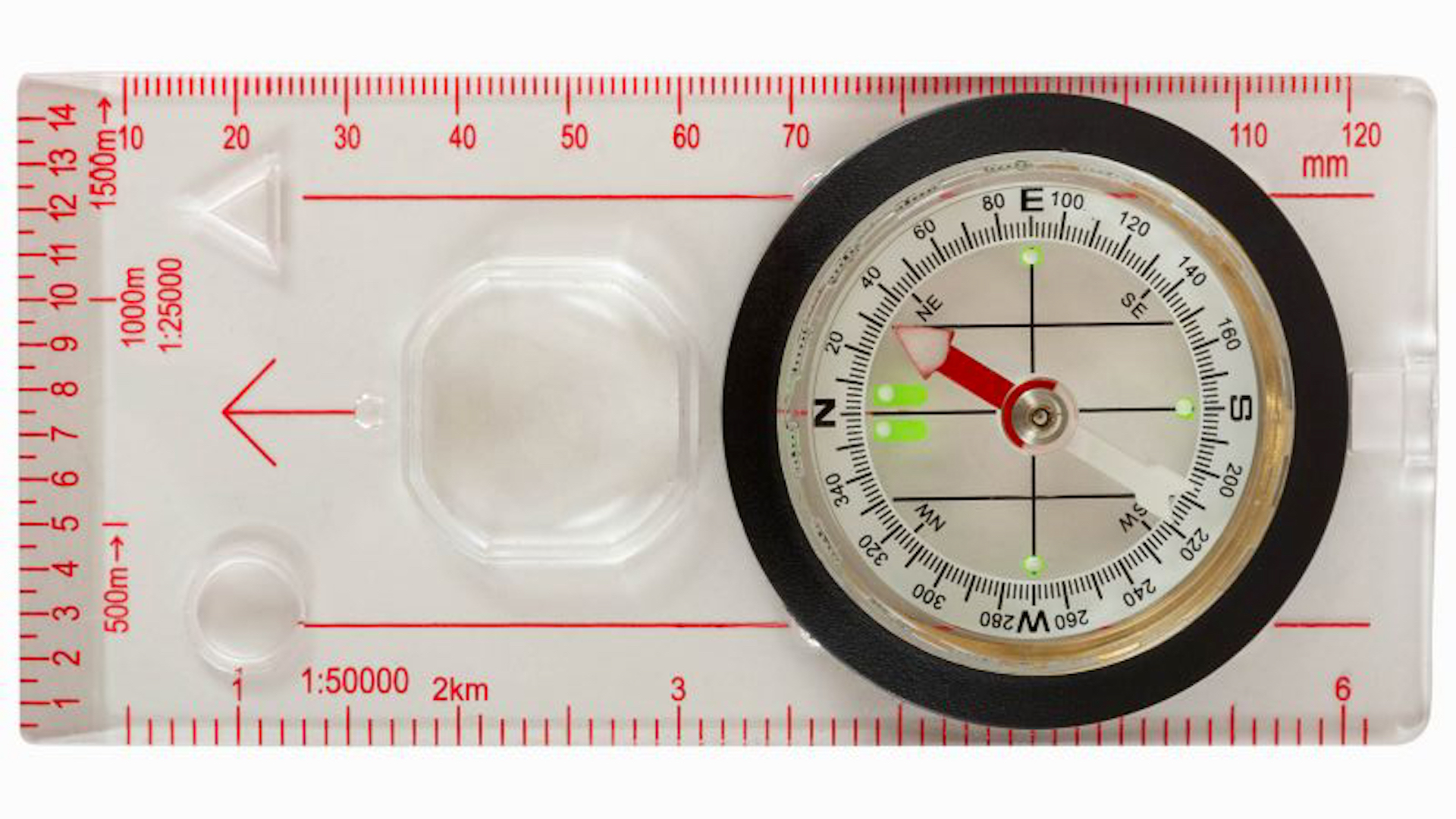Advnture Verdict
As an entry-level compass for occasional use or when learning elementary navigation, this is a solid option. It has pretty much all the essentials required for use with an Ordnance Survey map for UK hiking and hillwalking.
Pros
- +
Practical base plate markings with 1:25k and 1:50k scales
- +
Useful magnifying aperture for use with a map
- +
Features rotating bezel with orienting lines
Cons
- -
Slightly stiff bezel
- -
Dial not the easiest to read
- -
Lacks friction feet for use with a map
- -
No declination scale
You can trust Advnture
Highlander Deluxe Map Compass: first impressions
This low-cost baseplate Highlander Deluxe Map Compass is likely to attract value-conscious hillwalkers as well as those on a tight budget. Do you get what you pay for? In short, yes – but that’s not to say it’s a bad product, which is why it features in Advnture's best compass buying guide.
With baseplate markings in mm and inches as well as scale measurements in 1:50k and 1:25k, it works well enough with Ordnance Survey maps (see how to read a map). The magnifying aperture also makes it easier to read place names, contours and spot heights or discern landscape features. The black-bordered bezel isn’t perhaps quite as easy to read as more expensive compasses, and the small degree markings also need closer study.
There are basic orienting lines inside the capsule in lieu of an arrow, but unusually inter-cardinal compass points are marked in addition to the four cardinal points. There’s plenty of lume on the dial, including a big splodge on the chunky needle. This possibly isn’t quite as elegant or precise as slimmer needles, but hey, it points north, and that’s the most important thing. If you don’t know why, then you really need to know how to use a compass, or read our guide to adjusting for magnetic declination.
• RRP: £5 (UK)
• Weight: 60g / 2.12oz
• Dimensions: 125 x 60 x 15mm / 4.9 x 2.4 x 0.6in
• Scales: 1:50k, 1:25k
In the field
The rectangular baseplate has rounded corners that make it a little more comfortable to hold, but it isn’t as ergonomic as higher-priced models (see types of compass). On our test sample, the bezel was also a little bit stiff to turn, though it started to loosen up over time.
The needle itself settles relatively quickly, and didn’t seem to jump around too much, suggesting that this compass is oil-damped rather than liquid-filled, though we were unable to verify this. It does have the occasional tendency to stick – probably because of that chunky arrow-shaped needle, but if something seems awry, a light tap on the housing invariably set it spinning freely again.
It’s also a little more important with this compass to ensure it is perfectly level in order to ensure a consistently accurate reading. But it did the job in the hills perfectly well, and at this price we can have no real complaints.
All the latest inspiration, tips and guides to help you plan your next Advnture!
An outdoors writer and editor, Matt Jones has been testing kit in the field for nearly a decade. Having worked for both the Ramblers and the Scouts, he knows one or two things about walking and camping, and loves all things adventure, particularly long-distance backpacking, wild camping and climbing mountains – especially in Wales. He’s based in Snowdonia and last year thru-hiked the Cambrian Way, which runs for 298 miles from Cardiff to Conwy, with a total ascent of 73,700 feet – that’s nearly 2½ times the height of Everest. Follow Matt on Instagram and Twitter.


